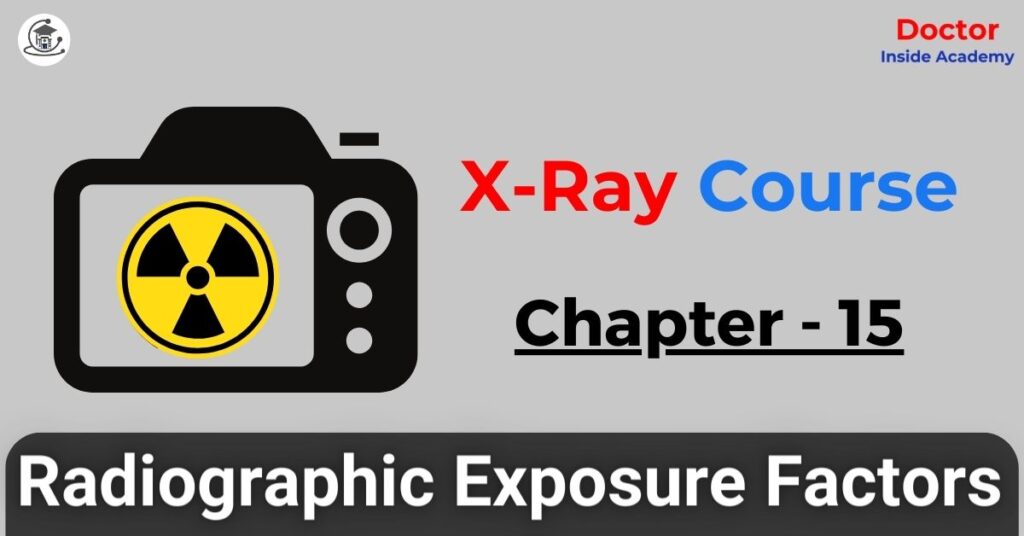Radiology is becoming advanced because of advanced digital technologies and scientific approaches. Radiographic exposure factors are on them and very important to understand, because they lead to overexposure or underexposure of the final x-ray images. Radiographic exposure factors include many factors, a few of which are discussed in this chapter of x ray course series by Doctor Inside Academy.
So, a radiographer must maintain the radiation exposure following the ALARA principle (As Low As Reasonably Achievable). Along with these, here are a few key radiographic exposure factors, i.e.: – mAs, kVp, distance, etc, that must be kept in mind, while performing any x-ray examinations for diagnostic or screening purposes.
Exposure Time in Radiography
The exposure time is any length measured in seconds or milliseconds. This exposure time allows radiographers to adjust the exposure value from low to a higher extent.
This exposure time directly influences the overall production of X-rays and leads to the overexpose or underexpose of the final X-ray images.
The patient radiation dose is also directly proportional to the exposure time. Additionally, few radiography units have AEC (Automatic Exposure Control) because they can terminate the exposure at the optimum level.
MilliAmpere in Radiography
It is also known as MA in radiography and measures the current flow rate in an X-ray circuit as it checks the electrons with their speed of X-ray production.
Milliampere checks how much time is needed to produce a certain amount of X-rays. If the MA is high, this will reduce the exposure time and vice versa, but a possibility of blurriness is there, because of the patient’s movement.
Here, the mA range starts from 50 mA to 100 mA, 200 mA, 300 mA, 400 mA, and 500 mA, sometimes leading up to 100 mA or 1500 mA.
This mA is in relationship with time, and the result is mAs, which covers the overall production of radiation exposure.
mA*Time(sec) = mAs
A little change in mAs alters the radiation production during the exposure and can manipulate the overall quality of the final X-ray image.
Kilovoltage in Radiography
The kilovoltage or kilovoltage peak (kVp); measures the potential difference between the x-ray tube and the speed of electrons. When colliding, each electron’s total kinetic energy is also accounted for.
So, kVp defines the penetration power of these electrons, if the kVp is higher, then the penetration power of the electrons is higher, or vice versa.
These changes influence the wavelength of these electrons. They can manipulate the final X-ray image in terms of quality, i.e.- image contrast defines the blackness or whiteness of the X-ray images.
The kVp ranges between 40 kVp and 150 kVp, a small amount of kVp is used in soft tissues, or on small body parts, and the higher kVp is used while exposing harder tissues or body parts.
Distance in Radiography
The distance is a very important factor while processing any type of X-ray exposure. the distance; here is between the X-ray source to the image receptors (target).
The distance is very crucial, because if the distance is increased, then the radiation is more prone to scattering, and leads to poor x-ray image quality or vice versa. So, distance must be kept, so the optimum distance is very important to obtain better X-ray image quality.
Technique Charts
The technique chart is a set of mAs and Kvp settings for every exposure and is located near the exposure control unit in the X-ray console room.
Nowadays, in advanced radiography units, these technical charts become automated in these system software. Here, the radiographers just need to select the desired anatomical position, and can be adjusted manually.





